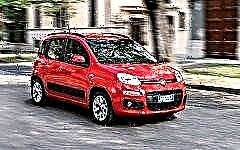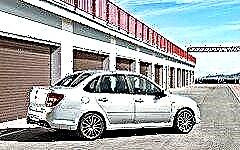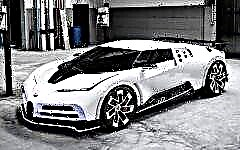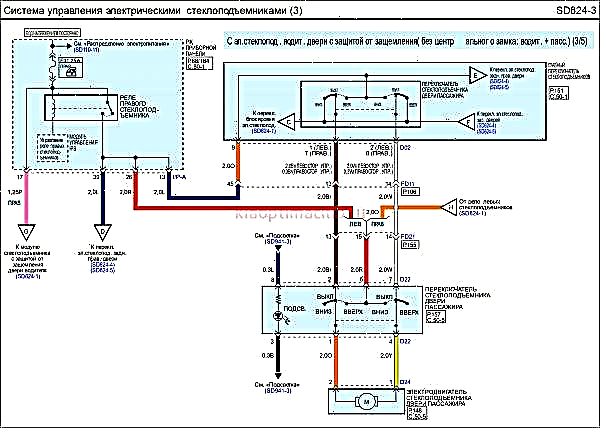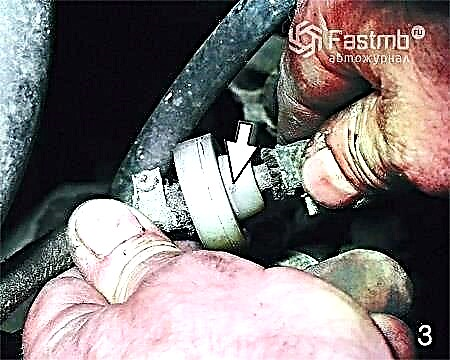 The turbocharger is one of the essential parts of a car engine, but its failure is not one of the pleasant moments. We will tell you the main malfunctions of the turbocharger and how to repair it.
The turbocharger is one of the essential parts of a car engine, but its failure is not one of the pleasant moments. We will tell you the main malfunctions of the turbocharger and how to repair it.

The content of the article:
- Component turbocharger
- How a turbocharger works
- Major malfunctions
- Repair process
- Repair cost
Ten or twenty years ago, the presence of a turbocharger in a car engine was a luxury, but now it is a familiar, necessary element of modern cars. Most auto manufacturers, thanks to a turbocharger, increase the power of small engines, thereby saving resources and fuel.
In addition to the introduction by manufacturers, buyers began to give the privilege and demand to the presence of a turbocharger in the car. Therefore, it is necessary to know how to properly care for, operate and repair a turbocharger. Also in the article we will consider the main problems and how to fix them.
How a car's turbocharger works

Having considered the operation of the turbocharger, now we will briefly talk about its main components. The first and foremost is the turbine itself with the impeller, then the centrifugal air pump and the compressor itself are on the list. Smaller parts are a rigid axis for connecting parts, bearings, rings, seals, various parts and valves. This whole set is hidden in a special case that can withstand strong heat.
How a turbocharger works

A turbocharger, or more commonly known as a turbine, is designed to force additional air into the cylinders. Due to this procedure, the fuel in the cylinders will burn to the end and more efficiently. It should be understood that the presence of a turbocharger under the hood will not only increase the number of horses, but also the appetite, which will also double in comparison with engines without a turbine.
The turbocharger uses the exhaust gas as additional air to rotate the turbine. As a result of the rotation, the compressor pushes additional air into the cylinders, which draws out additional horsepower. Unlike a mechanical supercharger, a turbocharger does not steal engine energy from the crankshaft.
So, what are the stages of the turbocharger to complete the task:
- The first stage is the intake of cold air into the engine air intake, and then it is fed to the compressor;
- The weight process takes place thanks to the impeller of the turbocharger, which draws air;
- The next step is to compress the air and heat it, then it is blown out into the heat exchanger;
- After passing through the heat exchanger, the air is cooled and enters the cylinders. Thanks to the additional oxygen, the fuel in the cylinder is compressed more quickly than usual;
- Since combustion is more efficient and burns more fuel than usual, the result is more power that is transmitted to the wheels.
- Exhaust gases are discharged through the exhaust valves;
- Instead of entering the exhaust system, the exhaust gases enter the impeller of the turbocharger, thereby causing the impeller to rotate faster.
- After the impeller, the exhaust gases are discharged in the direction of the muffler, and the compressor, due to the rotation of the impeller, pumps in new oxygen. Thus, the process becomes cyclical until the moment there is a need for it.
What are the turbocharger malfunctions

Like any mechanism, a turbocharger can fail from time to time and require repair. The first signs of a malfunction are:
- loss of engine power;
- black or dark blue exhaust colors;
- oil consumption suddenly increased;
- the sound of the turbocharger or engine changes from time to time.
The most common turbocharger malfunctions are deformation or wear of the rotor bearings. During the operation of the turbine, an oil cushion appears between the bearing and the axle, but if there is bad or wrong oil, this cushion will disappear. The result will be strong friction and rapid heating.
A similar situation can happen when the turbine is operated for a very long time at maximum power, which often leads to overheating. In the case when the above induced factors coincided at the same time, and this happens often, expect a complete failure of the turbocharger. In addition to the above reasons, there may also be mechanical damage - damage due to hard or soft objects that have fallen into the turbine. The impeller blade can be abraded, affecting power instantly and producing an unpleasant sound and a need for urgent repair.

Having found such malfunctions, you can go in two ways, the first is an independent repair, and the second is a complete diagnosis of the turbine at a special stand in the service station. The stand provides for diagnostics of a turbocharger, both by external signs, and a complete run, simulating the operation of the engine. The possibility of a breakdown of the turbocharger engine is not excluded.
At home, it is worth repairing a turbocharger when you are 100% sure of a breakdown and have experience in such repairs. Otherwise, it is better to give the repair to specialists with experience.
How to repair a turbocharger

After finding a breakdown, the first thought is how to repair a turbocharger. If you have no experience in car repair, and you never had to deal with turbines, then it is better not to risk it, but to contact a specialized repair center.
But it happens when the breakdown is small and you can repair the turbocharger at home. Before proceeding with the disassembly, it is necessary to purchase a repair kit for your turbocharger, as the oil seals and rings will need to be replaced.
The first step, as expected, is to remove the turbine and compressor from the fasteners. Often, it is not a problem to remove the compressor volute, but the turbine volute can get stuck. The mallet and chisel method is acceptable, but not desirable, you can bend the metal and the ends of the mount. It is best to remove the same bolts for fastening, prying on them, gradually remove the turbine. It is worth considering that the place of the fastener goes to the cone, which means that you should not chop on the fastener. It will not be bad to soak it with WD-40, the carbon deposits quickly go away. It is important to carefully remove bolts, nuts, etc. during disassembly, since some manufacturers have unique ones and it will be very difficult to find suitable ones. After removal, it is immediately worth checking the backlash on the shaft, it should not be there at all. The next step is to check the impeller for damage. Next are the bearings, they should be like new, since the quality of the turbocharger will depend on them.

The rigid axle should not be in chips or similar irregularities, the appearance of such can lead to irreversible damage, even repair work will not be able to restore it. When disassembling a turbocharger, do not forget to look at the centrifugal air pump, it is responsible for pumping oxygen and unevenness will lead to a decrease in horses under the hood.
It is not uncommon for a situation where you can find a curved and uneven axis or shaft, in which case you should not try to align it at home. The turbine speed is super high and the slightest unevenness or imbalance will lead to instant failure and damage to parts. Having decided on the breakdown, we fix it and inspect the parts adjacent to it for a similar problem.Putting the parts back, some of them are held by the retaining rings. When installing such retaining rings, look carefully so that they fit into their grooves and there is no slightest crack.

It is advisable to make a list of what was filmed and what needs to be inspected (replaced). The longest maintenance is considered to be the shaft, it must be inspected as accurately as possible and the oil scraper rings must be installed at the end. It is not easy to do this without experience, and the process itself is rather boring and not varied. Before installing the shaft, it must be lubricated with oil, but so that it does not drip from it. Previously, having completely cleaned the snails, we inspect them for cracks and other defects. Now we assemble all the parts in the reverse order, the last to install and attach the turbocharger volutes.
If you do not dare to repair the turbine yourself, then you should understand that the technology of repairing a turbocharger is not simple and specialized service stations can take more than one day. Therefore, prepare in advance to be left without a car for a few days. The very same repair process on a special machine is very interesting. The specialist takes dozens of data and, based on their analysis, adjusts the individual parts of the turbocharger.
Self-repair is best done when there is no large deformation of parts and there is a possibility of replacement with new ones. It is better to do alignment, check and other tests with a turbocharger not on a special stand, otherwise just ruin the turbine.
Turbocharger or repair price

Depending on the type of turbocharger breakdown, the price will be different, respectively. On average, a simple repair costs from $ 50 to $ 150 excluding parts, more complex breakdowns can go up to $ 200 - $ 500. As a rule, specialized turbocharger repair centers give a guarantee for their services from 1 to 2 years. There is usually no such guarantee for parts.
Buying a turbocharger will be much more expensive than repairing, and it is not always so easy to find the one you need. The price of a turbocharger for Mercedes-Benz cars can range from 340 euros for a Sprinter and up to 1000 euros, or even higher. For Mitsubishi cars the price of the turbine starts from 250 euros and more to several thousand euros.
As you can see, the presence of a turbocharger under the hood of a car is a big plus for horses, but care and operation require careful adherence to the rules. The slightest overheating will lead to irreversible processes and a quick repair of the turbocharger.

